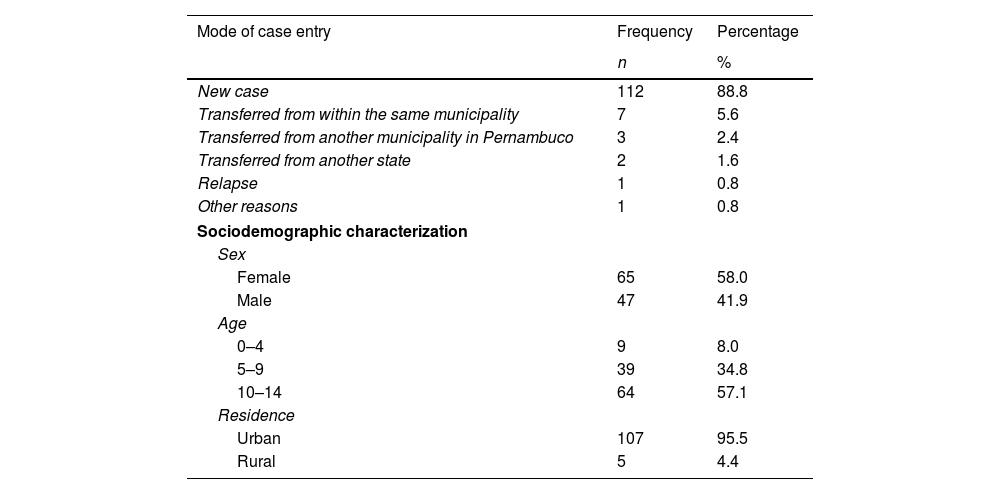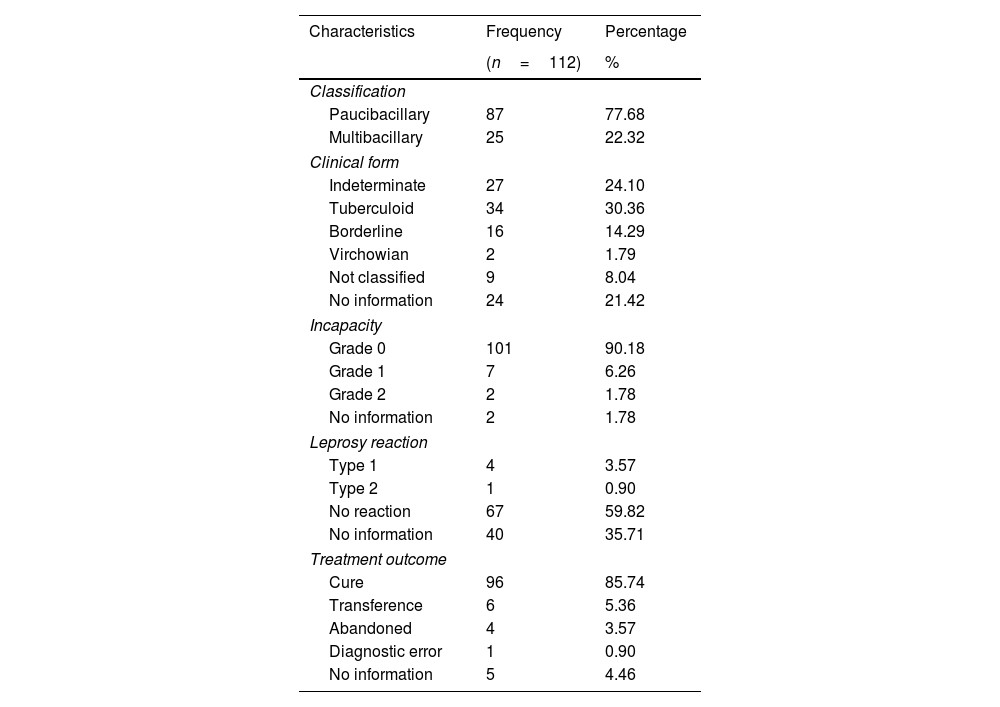The incidence of leprosy in children is an important indicator of the disease's tendency in the general population and suggests intense circulation and transmission of Mycobacterium leprae.
ObjectivesTo describe the clinical, epidemiological characteristics and temporal dynamics of leprosy cases in children under 15 years of age from 2008 to 2018 in an endemic municipality.
MethodsA descriptive study with an analytical approach was carried out with data from leprosy cases registered in the Brazilian Information System on Notifiable Diseases for the municipality of Cabo de Santo Agostinho, Pernambuco, Brazil.
ResultsBetween 2008 and 2018, 112 new cases of leprosy were registered. Most cases were classified as paucibacillary leprosy and occurred in children living in urban areas. There was no significant difference in the incidence of leprosy during the study period. Only 4.5% of the sample presented reactional episodes, but a high number of cases were not evaluated for the occurrence of reactions.
ConclusionsThe findings of this study show a high incidence of paucibacillary leprosy in children and adolescents, which reveals active transmission in the community and failures in the detection of new multibacillary cases among adults. Children between 10 and 14 years old are more vulnerable to M. leprae infection and mainly develop paucibacillary leprosy.
La incidencia de lepra en niños es un indicador importante de la tendencia de la enfermedad en la población general y muestra una intensa circulación y transmisión de Mycobacterium leprae.
ObjetivosDescribir las características clínico-epidemiológicas y la dinámica temporal de los casos de lepra en menores de 15 años de 2008 a 2018 en un municipio endémico.
MétodosSe realizó un estudio descriptivo con enfoque analítico con datos de casos de lepra del Sistema Brasileño de Información sobre Enfermedades de Declaración Obligatoria para el municipio de Cabo de Santo Agostinho, Pernambuco, Brasil.
ResultadosEntre 2008 y 2018, se registraron 112 nuevos casos de lepra. La mayoría de los casos fueron clasificados como lepra paucibacilar y ocurrieron en niños que viven en áreas urbanas. No hubo diferencias significativas en cuanto a la incidencia de la lepra durante el período de estudio. Solo el 4,5% de la muestra presentó episodios reaccionales, pero un gran número de casos no fueron evaluados para determinar la aparición de reacciones.
ConclusionesLos hallazgos de este estudio muestran una alta incidencia de lepra paucibacilar en niños y adolescentes, lo que revela transmisión activa en la comunidad y fallas en la detección de nuevos casos multibacilares entre adultos. Los niños entre 10 y 14 años son más vulnerables a la infección por Mycobacterium leprae y desarrollan principalmente lepra paucibacilar.
Article
Socio de la Sociedad Española de Enfermedades Infecciosas y Microbiología Clínica

Para acceder a la revista
Es necesario que lo haga desde la zona privada de la web de la SEIMC, clique aquí










